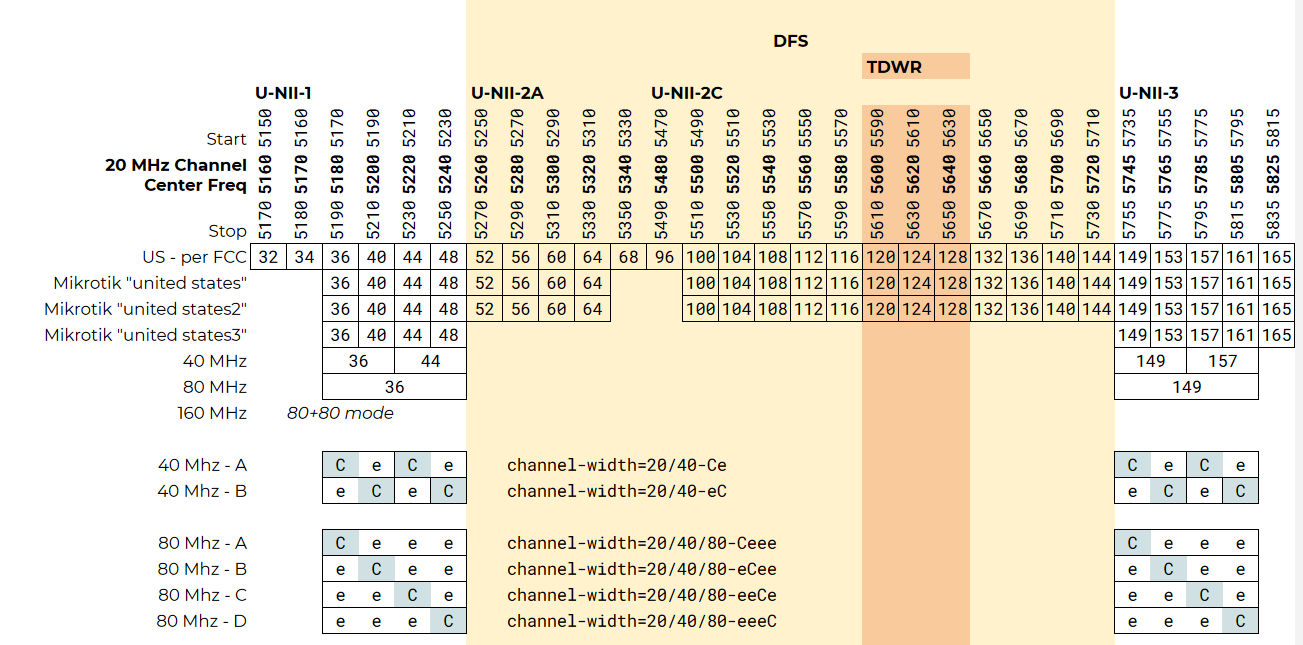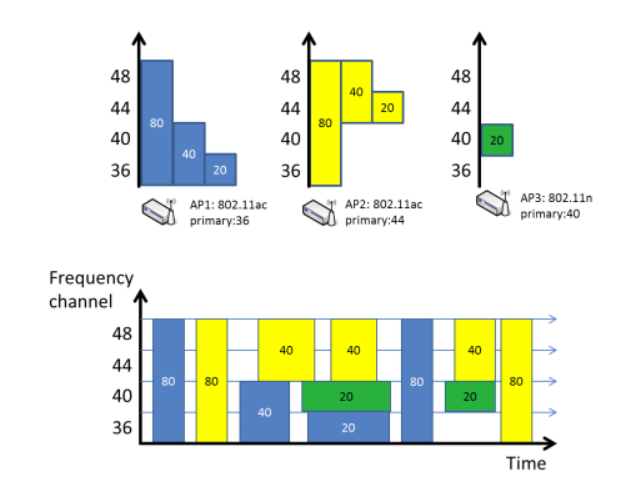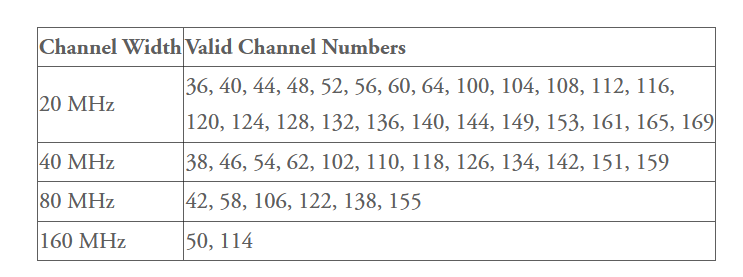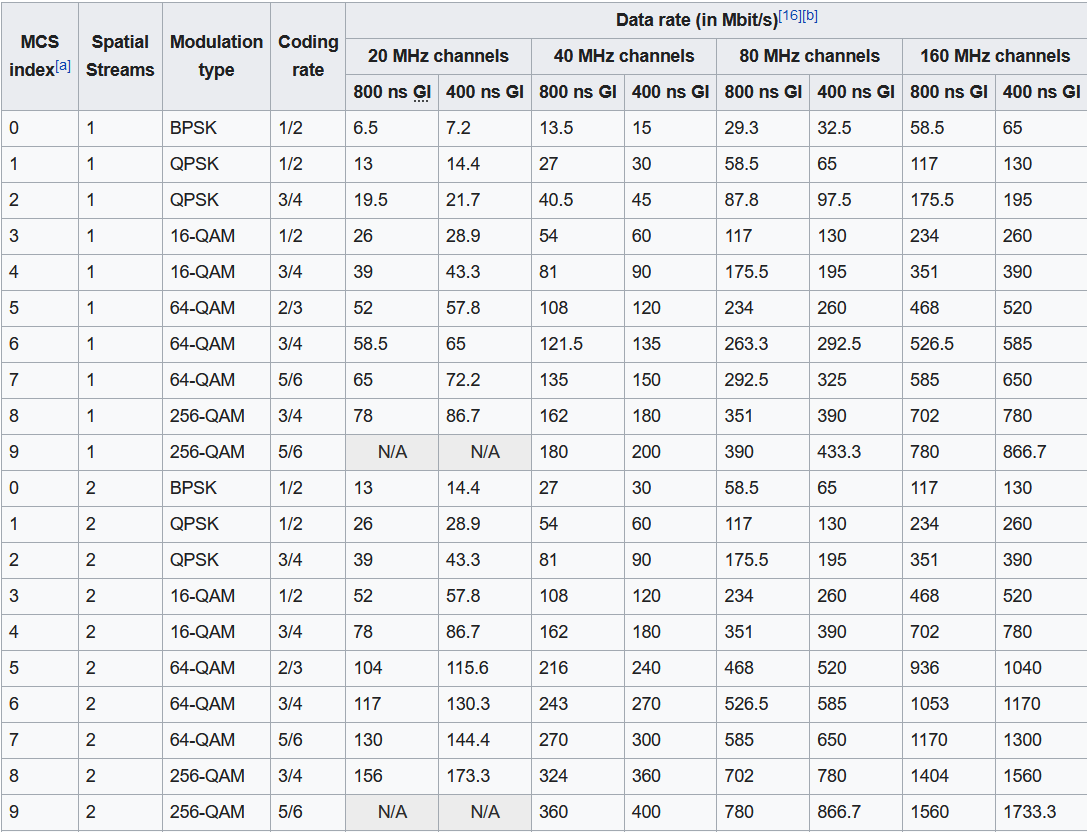EDIT: 2024-04-13 - Upgrade to RouterOS 7.x and wireless-qcom-ac.
Hi All,
I’m new at Mikrotik gear and thought it would be good to post my full configuration of my network. Hopefully this will help the next person along, and maybe I’ll receive some sage advise from the gurus on here. All feedback welcome.
The config files are here https://github.com/maxslug/mikrotik_maxslug where I’ll try to keep them up to date with the changes as I learn more from you all.
Router
https://github.com/maxslug/mikrotik_maxslug/blob/master/mikro1.rsc
Switches
https://github.com/maxslug/mikrotik_maxslug/blob/master/sw1.rsc
https://github.com/maxslug/mikrotik_maxslug/blob/master/sw2.rsc
WAPs
https://github.com/maxslug/mikrotik_maxslug/blob/master/wap1.rsc
https://github.com/maxslug/mikrotik_maxslug/blob/master/wap2.rsc
https://github.com/maxslug/mikrotik_maxslug/blob/master/wap3.rsc
Migration from RouterOS 6.x to RouterOS 7.x
The older RouterOS 6.x / old CapsMAN files are at https://github.com/maxslug/mikrotik_maxslug/tree/master/router-os-6.
This is the diff of changes need to upgrade form RouterOS 6.x to RouterOS 7.x, as well as migrate to wireless-qcom-ac and the new CapsMAN:
https://github.com/maxslug/mikrotik_maxslug/commit/fdb2b360eb1f53512e3792e139eefa55d040f262
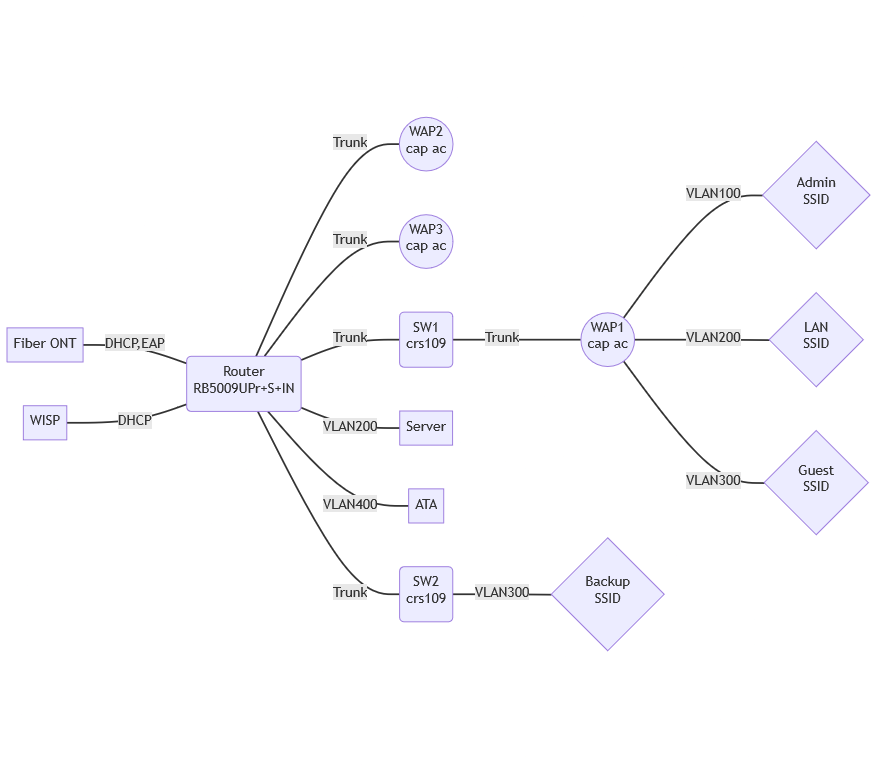
(SSIDs only shown on one AP and one Switch, not on all, just to not clutter the diagram)
Thank you to all the mikrotik forum posters for all this knowledge and hard work, especially pcunite!
Design Goals
WAN
- Dual ISPs with auto-failover
- Complete removal of AT&T router (“residential gateway”) from the picture
L1
- Disaggregation of routing and wifi into separate solutions
- Switched managed Ethernet
- Redundancy
- Power over Ethernet to allow centralized UPS
L2 / L3
- VLAN separation of Guest, Primary, IOT, Neighbor, and VOIP networks
Wireless
- Centrally managed access points
- Roaming / Hand-off improvements
- Higher overlapping coverage at lower radio power rates
L4+
- Port Forwarding over VLAN
- Secure DNS
Network Design
These are notes to go along with the config files
Inventory
- 1 x Mikrotik RB5009UPr+s+IN Router using RouterOS 7.15beta8 [arm64]
- 2 x Mikrotik CRS109-8G-1S-2HnD Router/Switch/APs running RouterOS 7.15beta8 [mips]
- 3 x Mikrotik cAP AC (RBcAPGi-5acD2nD) using RouterOS 7.15beta8 + wireless-qcom-ac [arm]
VLANs
VLAN |IP |Usage
------|------------------|-----------------
100 |192.168.100.0/24 |Base / Management
200 |192.168.120.0/24 |Normal LAN
300 |192.168.130.0/24 |Guest / IOT
400 |192.168.140.0/24 |VOIP
500 |192.168.150.0/24 |Neighbor
- For each subnet addresses
.1through.39are reserved for static IP assignment..1is the router. - The WAN ports are not on VLANs
- Once configured, you will need to make a port be on
VLAN 100to use WinBox.
